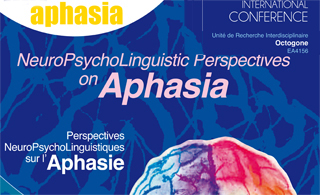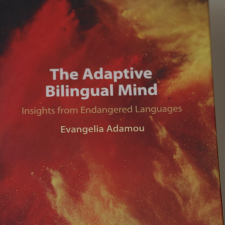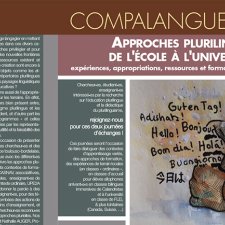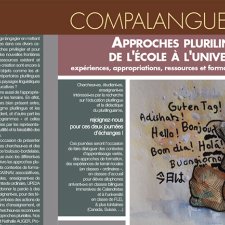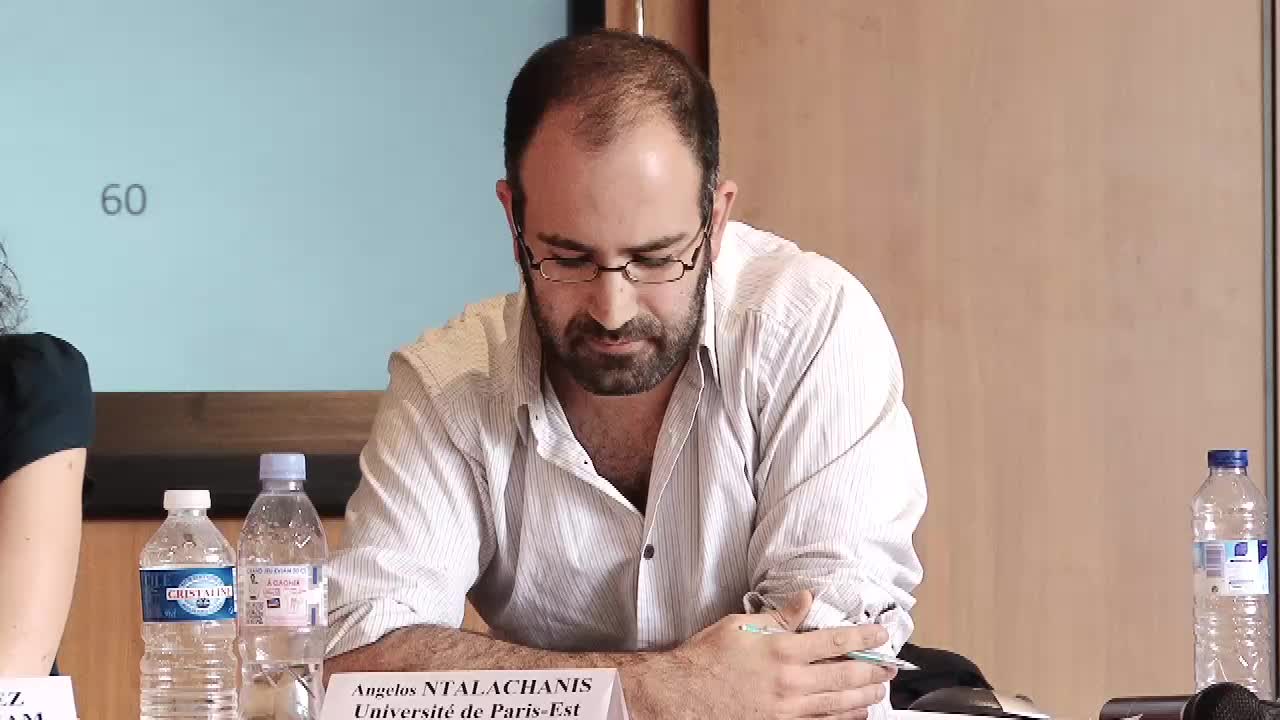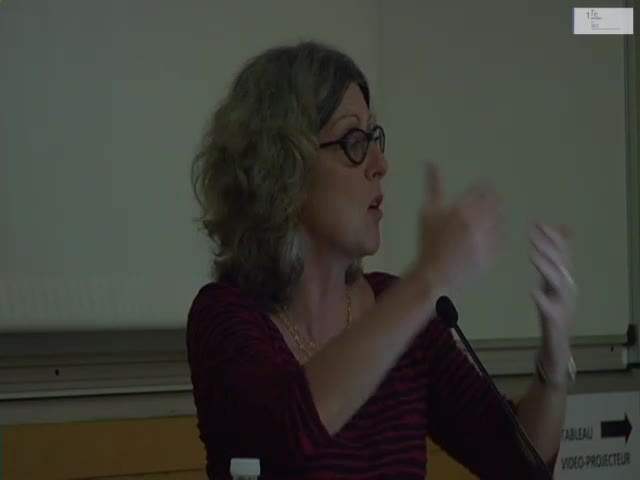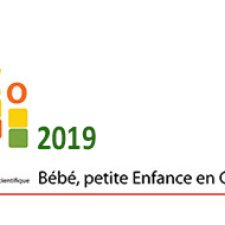Notice
Principles of bilingual aphasia assessment and interpretation of findings / Michel Paradis
- document 1 document 2 document 3
- niveau 1 niveau 2 niveau 3
Descriptif
Principles of bilingual aphasia assessment and interpretation of findings / Michel Paradis. In "Perspectives neuropsycholinguistiques sur l'aphasie - NeuroPsychoLinguistic Perspectives on Aphasia", colloque international organisé par l'Unité de Recherche Interdisciplinaire Octogone de l'Université Toulouse II-Le Mirail (France). Toulouse, 21-23 juin 2012.
Assessment:Because patients may recover each of their languages to vastlydifferent extents (parallel, differential, successive, selective,blending, (alternating) antagonistic recoveries and selectiveaphasia) (Paradis, 2008), all languages previously spoken by thepatient should be assessed. Not testing one of a patient’slanguages may have detrimental social and/or clinical consequences.It is therefore no longer ethically acceptable to assess aphasicpatients on the basis of the examination of only one of theirlanguages. However, the evaluation instrument should not be a meretranslation of a battery designed for, and standardized in, anotherlanguage, for a number of reasons: For instance, syntacticconstructions, such as the passive in English, are rarely if everused, or are much simpler, in some languages. Hence, mosttranslations will not yield interpretable results. Correspondingitems in another language must be selected so as to tap the sameinformation as the original, in accordance with the rationale thatmotivated the construction of the items in the first place. The testsmust be functionally equivalent and directly comparable, task bytask, with respect to both degree of difficulty and nature of thematerial being tested, well beyond its cultural compatibility. Thisis why the Bilingual Aphasia Test was designed. Its various versionsare culturally and linguistically equivalent and criteria ofcross-language equivalence vary with each task (Paradis, 2011).
Interpretationof test results: It is important to realize that manifestations ofaphasia symptoms differ across various languages in accordance withtheir specific structures. The reason why a certain type of error ismore prevalent in one of a patient's languages may be due to one ormore of several factors: The incidence of obligatory contexts, thefrequency of use of a structure in a given language, the structuralcomplexity of the item; the presence or absence of redundancy;whether nouns and verbs exist as bare roots or must necessarily beinflected; whether, when inflections are omitted the remaining formis pronounceable or not, and whether the form is memorized orderivable by rule – namely, regular or irregular (Paradis, 2001).The type of error depends on the type of aphasia, but potentialerrors in each case are constrained by the structural characteristicsof each language.
Inaddition, for a meaningful analysis that leads to effectiverehabilitation, the age of appropriation, the degree of practice ofL2, as well as the age at time of assessment in case of a latelearned L2, must be taken into consideration. Depending on the ageand manner of acquisition and the degree of use of a second language,its cerebral representation will depend on different cerebralmechanisms. Early acquired languages rely to a great extent onautomatized implicit linguistic competence that is subserved byprocedural memory whereas later learned languages rely to a greaterextent on consciously controlled explicit metalinguistic knowledgethat is subserved by declarative memory (Paradis, 2008). As a result,double dissociations are observed in the better preservation of thefirst language (in amnesia and Alzheimer's disease) or of the secondlanguage (in aphasia, Parkinson's disease, and psychoses) These agefactors may also affect the transfer of therapeutic benefits from atreated to a non-treated language.
Thème
Documentation
Bibliographie sélective
Paradis, M. (2001), The need for awareness of aphasia symptoms in different languages. Journal of Neurolinguistics, 14, 85-94.
Paradis, M. (2008), Language and communication disorders in multilinguals. In B. Stemmer, H. Whitaker (eds.), Handbook of the Neuroscience of Language. Amsterdam: Elsevier Science, 341-349.
Paradis, M. (2011), Principles underlying the Bilingual Aphasia Test (BAT) and its uses. Clinical Linguistics & Phonetics, 25, 427-443.
> Voir aussi la bibliographie générale à télécharger dans l'onglet "Documents" de la séquence vidéo d'ouverture du colloque.
Dans la même collection
-
Phonological and phonetic encoding and impairment / Marina Laganaro
LaganaroMarinaPhonological and phonetic encoding and impairment / Marina Laganaro
-
Perspectives neuropsycholinguistiques sur l'aphasie - NeuroPsychoLinguistic Perspectives on Aphasia…
Perspectives neuropsycholinguistiques sur l'aphasie - NeuroPsychoLinguistic Perspectives on Aphasia : ouverture. Colloque international organisé par l'Unité de Recherche Interdisciplinaire Octogone de
-
A « subtle phonetic deficit » in fluent aphasia ? An acoustic and perceptual study / Anna Marczyck
MarczyckAnnaA « subtle phonetic deficit » in fluent aphasia ? An acoustic and perceptual study / Anna Marczyck
-
Entre dysfonctionnement et normalité : une perspective à partir de données anatomo‐fonctionnelles o…
DuboisCyril Michel RobertLahyaniSaoussanEntre dysfonctionnement et normalité : une perspective à partir de données anatomo‐fonctionnelles obtenues auprès de sujets sains et de sujets aphasiques / Saoussan Lahyani, Cyril Dubois. In
-
Pour une approche dynamique des réponses aphasiques obtenues en dénomination d’images : apport de l…
TranThi MaiPour une approche dynamique des réponses aphasiques obtenues en dénomination d’images : apport de l’analyse qualitative / Thi-Mai Tran, in "Perspectives neuropsycholinguistiques sur l'aphasie -
-
Compounding and lexical recursion in aphasia and in Alzheimer’s disease / Zoltán Bánréti
BánrétiZoltánCompounding and lexical recursion in aphasia and in Alzheimer’s disease / Zoltán Bánréti. In "Perspectives neuropsycholinguistiques sur l'aphasie - NeuroPsychoLinguistic Perspectives on Aphasia",
-
Age of acquisition affects word retrieval in spontaneous speech produced by patients with Alzheimer…
GayraudFrédériqueBarkatMélissaAge of acquisition affects word retrieval in spontaneous speech produced by patients with Alzheimer's disease / Frédérique Gayraud, Mélissa Barkat-Defradas. In "Perspectives neuropsycholinguistiques
-
Morpho-syntactic processing of regular and irregular formations in Arabic aphasia / Tariq Khwaileh
KhwailehTariqMorpho-syntactic processing of regular and irregular formations in Arabic aphasia / Tariq Khwaileh. In "Perspectives neuropsycholinguistiques sur l'aphasie - NeuroPsychoLinguistic Perspectives on
-
German Broca’s and Wernicke’s aphasics display similar deficits in syntactic performance / Eva Wimm…
WimmerEvaGerman Broca’s and Wernicke’s aphasics display similar deficits in syntactic performance / Eva Wimmer. In "Perspectives neuropsycholinguistiques sur l'aphasie - NeuroPsychoLinguistic Perspectives on
-
Violating canonicity in Spanish agrammatism / Silvia Martínez-Ferreiro
Martinez-FerreiroSilviaViolating canonicity in Spanish agrammatism / Silvia Martínez-Ferreiro. In "Perspectives neuropsycholinguistiques sur l'aphasie - NeuroPsychoLinguistic Perspectives on Aphasia", colloque international
-
Sentence comprehension deficits in aphasia : additional insights from impairment-specific assessmen…
HanneSandraSentence comprehension deficits in aphasia : additional insights from impairment-specific assessment / Sandra Hanne.
-
Perioperative language assessment in multilingual patients undergoing awake surgery / Barbara Köpke
KöpkeBarbaraPerioperative language assessment in multilingual patients undergoing awake surgery / Barbara Köpke. In "Perspectives neuropsycholinguistiques sur l'aphasie - NeuroPsychoLinguistic Perspectives on
Sur le même thème
-
Multilinguality and data access: an area studies librarian’s perspective
WagnerCosimaMultilinguality and data access: an area studies librarian’s perspective
-
Antoine de Mena parle de son film "Hors Sujet"
MenaAntoine deInterview d'Antoine de Mena pour son film "Hors sujet" en compétition à la 44ème édition du Festival International Jean Rouch en 2025.
-
Dis-moi comment tu parles
LenartEwaLamalle CabarrusAurélieDiakiteEdwigeNguyenMinh TheAmmariLilaCe film a été réalisé dans le cadre de la recherche-action "le plurilinguisme à l'école primaire : valoriser les langues d'héritages pour une école et une société inclusives" Avec l'aimable
-
L'orthotypographie en langue espagnole et en langue portugaise
Ce webinaire s'inscrit dans une série de webinaires courts, de 1 heure environ, qui vise à offrir aux éditeurs et éditrices francophones travaillant sur des revues ou ouvrages en langue étrangère une
-
The Adaptive Bilingual Mind
AdamouEvangeliaLa chercheuse Evangelia Adamou (LACITO) présente son ouvrage "The Adaptive Bilingual Mind" (2021, Cambridge University Press).
-
Approches plurilingues de l'école à l'université. Grands Témoins : Mariella Causa, Claudine Garcia-…
Garcia-DebancClaudineCausaMariaLes journées COMPALANGUES 2021 sont l’occasion de remettre en réflexion et dialogue les problématiques travaillées dans les journées COMPALANGUES 2015 et 2017, ainsi que dans le colloque LIVRE
-
Inclusion linguistique des enfants plurilingues en classe ordinaire : entre approbation et réticenc…
PeregoChristineÀ partir de son expérience de chargée de formation et formatrice au CASNAV [centre académique pour la scolarisation des élèves allophones nouvellement arrivés (EANA)] de l'académie de Lyon, et en tant
-
Du multilinguisme « cosmopolite » à l’option arabe : stratégies linguistiques et redéfinition de l…
ΝταλαχάνηςΆγγελοςPanel 2 : Éducation et enseignement, entre savoirs locaux et logiques impériales Dire et écrire le pouvoir impérial en Méditerranée, XIXe-XXe siècles Journée d’études organisée le 8 juin 2012 de
-
La pluralité des langues
ArmandFrançoiseÉducation et diversité Première rencontre du Réseau international Éducation et diversité (RIED) 20-22 octobre 2014, École supérieure du professorat et de l’éducation, Marseille
-
How prosody helps infants and children to break into communication
GervainJuditThe talk will present four sets of studies with young infants and children to show who prosody helps them learn about different aspects of language, from learning basic word order through
-
"Déficit phonético-phonologique dans l’aphasie vasculaire : Réflexion sur le rôle des structures sy…
Les locuteurs ayant subi un AVC entrainant une aphasie avec deficit (phonetico-)phonologique realisent, en production orale, des paraphasies qui alterent soit la structure syllabique de leur langue
-
Socialisations langagières et inégalités scolaires / Élisabeth Bautier
BautierÉlisabethSous-tendue par la question des inégalités d’apprentissage scolaires et des habitudes langagières de l’école qui sont au cœur de ces inégalités, cette communication porte sur les modes de


